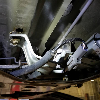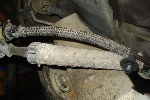-
Performance Upgrades - Maintenance - Modifications - Problem Solving - Off-Road - Street Trucks.
Covering the Explorer, ST, Sport, Lincoln Aviator, Sport Trac,
Mercury Mountaineer, Mazda Navajo, Ford Ranger, Mazda Pickups, and the Aerostar.
Featuring H.I. - Human Intelligence.
Register Today It's free!
- Forums
- Generation Specific Forums
- 1995 - 2001 Explorer Ranger Merc. 2nd Generation
- Modified 1995-2001 Explorers
You are using an out of date browser. It may not display this or other websites correctly.
You should upgrade or use an alternative browser.
You should upgrade or use an alternative browser.
Bypass oil filter installation
- Thread starter aldive
- Start date
Elite Explorer members see no advertisements, no banner ads, no double underlined links,.
Add an avatar, upload photo attachments, and more!.
- Joined
- November 11, 2005
- Messages
- 56,675
- Reaction score
- 1,181
- City, State
- Brooklyn, NY
- Year, Model & Trim Level
- 88 89 93 95 96 Aerostars
I had a question about oil pressure. With a finer filter (lower micron rating) it should drop the flow rate. I know that the bypass system should compensate, but if it filters at such a fine rate, wouldn't the bypass be doing most of the work, and not the actual primary filter? What is your average oil pressure with a new filter, and with one at the time of an oil change when the filter is ready to be replaced? One last thing, your temperature gauge said that your oil was 200 degrees. Did you see any improvement with that cooler sleeve going around it?
aldive
Elite In Memoriam
- Joined
- January 17, 2001
- Messages
- 24,667
- Reaction score
- 28
- Year, Model & Trim Level
- 1999 XLT
BrooklynBay said:I had a question about oil pressure. With a finer filter (lower micron rating) it should drop the flow rate. I know that the bypass system should compensate, but if it filters at such a fine rate, wouldn't the bypass be doing most of the work, and not the actual primary filter? What is your average oil pressure with a new filter, and with one at the time of an oil change when the filter is ready to be replaced?
One last thing, your temperature gauge said that your oil was 200 degrees. Did you see any improvement with that cooler sleeve going around it?
I do not measure oil pressure.
The Cool Collar does work; take a look at http://www.explorerforum.com/forums/showthread.php?t=142671&highlight=cool+collar
aldive
Elite In Memoriam
- Joined
- January 17, 2001
- Messages
- 24,667
- Reaction score
- 28
- Year, Model & Trim Level
- 1999 XLT
aldive said:25k UO sample taken today; will mail to Blackstone in the morning.
Data report soon.
UOA data at http://www.explorerforum.com/forums/showthread.php?p=1417598#post1417598
aldive
Elite In Memoriam
- Joined
- January 17, 2001
- Messages
- 24,667
- Reaction score
- 28
- Year, Model & Trim Level
- 1999 XLT
The oil supply ( from motor to bypass manifold ) and return lines have frayed badly and a slight oil leak is occurring.
New hose has been ordered from Amsoil and will be here soon.
I believe the problem was caused by exhaust heat. The new hose will be wrapped in header tape.
New hose has been ordered from Amsoil and will be here soon.
I believe the problem was caused by exhaust heat. The new hose will be wrapped in header tape.
aldive
Elite In Memoriam
- Joined
- January 17, 2001
- Messages
- 24,667
- Reaction score
- 28
- Year, Model & Trim Level
- 1999 XLT
The oil supply ( from motor to bypass manifold ) and return lines have frayed badly and a slight oil leak is occurring.
New hose has been ordered from Amsoil and will be here soon.
I believe the problem was caused by exhaust heat. The new hose will be wrapped in header tape.
Hoses replaced today - http://www.explorerforum.com/forums/showthread.php?t=199187
SCB2525
Active Member
- Joined
- August 5, 2006
- Messages
- 74
- Reaction score
- 0
- City, State
- Richboro, PA
- Year, Model & Trim Level
- 1996 XLT
Aldive,
Does the model bypass system you have allow the after-the-fact installation of the Amsoil preoiler like I know some do? If it is, have you ever considered getting a preoiler?
Does the model bypass system you have allow the after-the-fact installation of the Amsoil preoiler like I know some do? If it is, have you ever considered getting a preoiler?
- Joined
- June 17, 2004
- Messages
- 24,263
- Reaction score
- 4,729
- City, State
- Knoxville, TN
- Year, Model & Trim Level
- 98 Limited AWD 302
The price is the big issue, being over $300 for just the pump. I found a preoiler pump from Mallory that I never used, it was about $120 I recall. I'll put that on my new V8 engine, I hadn't decided about the Amsoil unit yet for my V6.
It's a really great product for all vehicles, but it shouldn't be so expensive.
It's a really great product for all vehicles, but it shouldn't be so expensive.
aldive
Elite In Memoriam
- Joined
- January 17, 2001
- Messages
- 24,667
- Reaction score
- 28
- Year, Model & Trim Level
- 1999 XLT
Aldive,
Does the model bypass system you have allow the after-the-fact installation of the Amsoil preoiler like I know some do? If it is, have you ever considered getting a preoiler?
Yes it does, However, I have not considered using one.
- Joined
- June 17, 2004
- Messages
- 24,263
- Reaction score
- 4,729
- City, State
- Knoxville, TN
- Year, Model & Trim Level
- 98 Limited AWD 302
I need to get mine installed, I have put it off and been using up my Pennzoil synthetic. That oil does not last as long, the Pennzoil does get used up much faster than Amsoil. I was showing about half a quart low with about 5500-6000 miles on the oil. The Amsoil was nearly full on the stick at 9500 miles.
The extra quart and a half of the bypass filter will help capacity and the oil life.
The extra quart and a half of the bypass filter will help capacity and the oil life.
- Joined
- June 17, 2004
- Messages
- 24,263
- Reaction score
- 4,729
- City, State
- Knoxville, TN
- Year, Model & Trim Level
- 98 Limited AWD 302
what would be the difference between installing the entire system or just installing the bypass filter in place of the standard filter?
Don't try that. The bypass filter is intended to only filter a tiny amount of oil at a time compared to the full flow filter. There is a tiny restriction built into the bypass filter adapter to limit oil flow. The hole is about 0.050" in size. You need the full flow filter, the bypass filter is just to get the tiny stuff about 2-3 microns in size. Regular filters let particles under about 15-20 microns through.
You can buy just the basic bypass adapter for about $30, the other costs are the $35 filter and the extra lines and fittings.
SIRIUS198
Active Member
- Joined
- October 30, 2008
- Messages
- 87
- Reaction score
- 0
- City, State
- Calgary, AB
- Year, Model & Trim Level
- '01 Explorer XLT 4.0 SOHC
Don't try that. The bypass filter is intended to only filter a tiny amount of oil at a time compared to the full flow filter. There is a tiny restriction built into the bypass filter adapter to limit oil flow. The hole is about 0.050" in size. You need the full flow filter, the bypass filter is just to get the tiny stuff about 2-3 microns in size. Regular filters let particles under about 15-20 microns through.
You can buy just the basic bypass adapter for about $30, the other costs are the $35 filter and the extra lines and fittings.
thanks for the info. i figured it wasn't really a good idea but wanted to check first.
Similar Threads
- Replies
- 1
- Views
- 2,462
- Replies
- 14
- Views
- 3,630
- Replies
- 89
- Views
- 62,283
- Replies
- 42
- Views
- 3,985
- Replies
- 16
- Views
- 6,256










